‘May December’, ‘Past Lives’ and Other Costume Designers Explain How They Weave a ‘Sense of Individuality’ Into Modern Clothes
- Oops!Something went wrong.Please try again later.
- Oops!Something went wrong.Please try again later.
- Oops!Something went wrong.Please try again later.
The safest-bet prediction for Oscar night in March is that a historical drama, period musical, or sci-fi/fantasy film will win the award for Best Costume Design. No contemporary-set picture has taken the prize in nearly 30 years (since 1994’s “The Adventures of Priscilla, Queen of the Desert”), while only a small handful have even scored nominations (“The Devil Wears Prada,” “La La Land”).
Dressing up monarchs and superheroes is a craft that receives and deserves praise. But we would also like to spotlight the crafty artisans this year who clothed characters from today – with results that are imaginative, seductive and sewn with many threads of this modern world.
May December
Costume design by April Napier
Everyone has their own story,” costume designer April Napier said, “and characters have to be imbued with a sense of individuality.” She leaned forward in her chair and added with emphasis: “Especially in a contemporary film.”
Napier should know. Her filmography includes such sharp and idiosyncratic modern-set projects as “Booksmart,” “Your Friends and Neighbors,” “Certain Women,” “Gentleman Broncos,” the Tilda Swinton drama “Julia,” Apple TV’s “High Desert” and Greta Gerwig’s contemporary-ish “Lady Bird,” which took place about 15 years earlier than its 2017 release.
Todd Haynes’s devilish melodrama “May December” is also set one click before present day, in 2015. “It’s contemporary, but just prior to the polarization of today’s society,” said Napier, a first-time collaborator with the famed director of “Safe,” “Far From Heaven” and “Carol.”
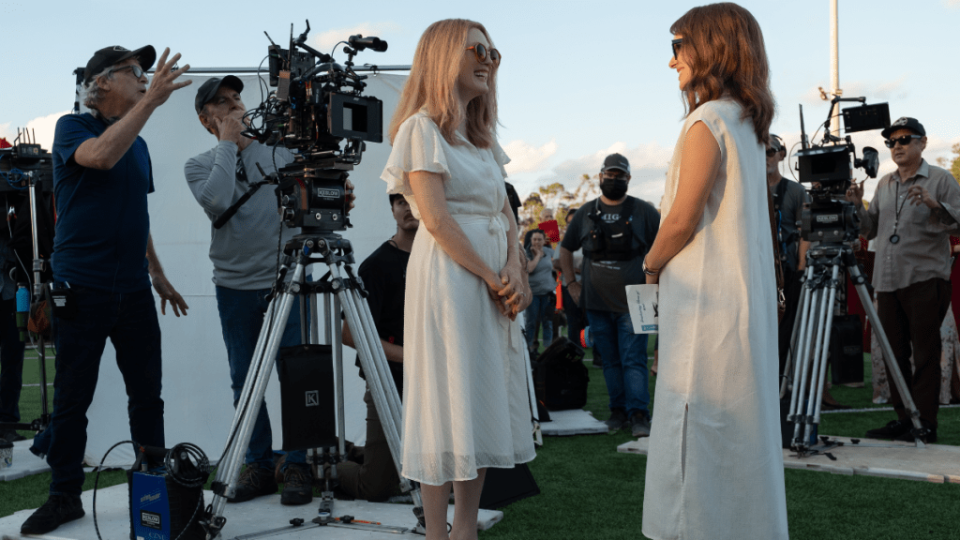
The film focuses on controversial married couple Gracie and Joe (Julianne Moore and Charles Melton), decades apart in age, whose lives are upended by an actress named Elizabeth (Natalie Portman) doing research to play Gracie in a movie. As the story continues, the two women’s identities subtly overlap.
“Gracie is such a princess character and her femininity is what she’s hanging onto, to maintain that control,” Napier said. “She has more flouncy, softer, feminine clothes. So we did a costume fitting for (Moore) on a Friday and then used all her wardrobe choices as a map to dress Natalie. Natalie’s character comes into the film in an urban uniform, shirt and cool jeans, so we intentionally started her wardrobe dark and then moved her into softer pastels.”
For the production, Napier and Haynes were bursting with cultural references, which subliminally influenced the film’s look: Robert Altman’s “Three Women,” Chantal Akerman’s “Jeanne Dielman,” actress Jane Birkin, photographers Deborah Turbeville, Nicholas Nixon and Tina Barney. “And Ingmar Bergman’s ‘Persona,’ of course, obviously,” Napier said, referring to the great-grandmommy of blurred-identity films.
Another major touchstone was the 1964 marital drama “The Pumpkin Eater,” starring Anne Bancroft and Peter Finch. “At one point in that film, a young Maggie Smith comes and lives with them and there’s a scene where Bancroft and Maggie Smith are cooking and their outfits are mimicking each other,” Napier said.
She continued, “One’s in a checked outfit and one’s in a striped outfit with a towel over her shoulder and I was like, ‘That’s Julianne and Natalie.’ That’s the scene in our film where Elizabeth comes over to bake and that’s when she starts her transition into Gracie. I went up to Todd and showed him a photo from ‘The Pumpkin Eater’ and was like, ‘We’re doing it.’”
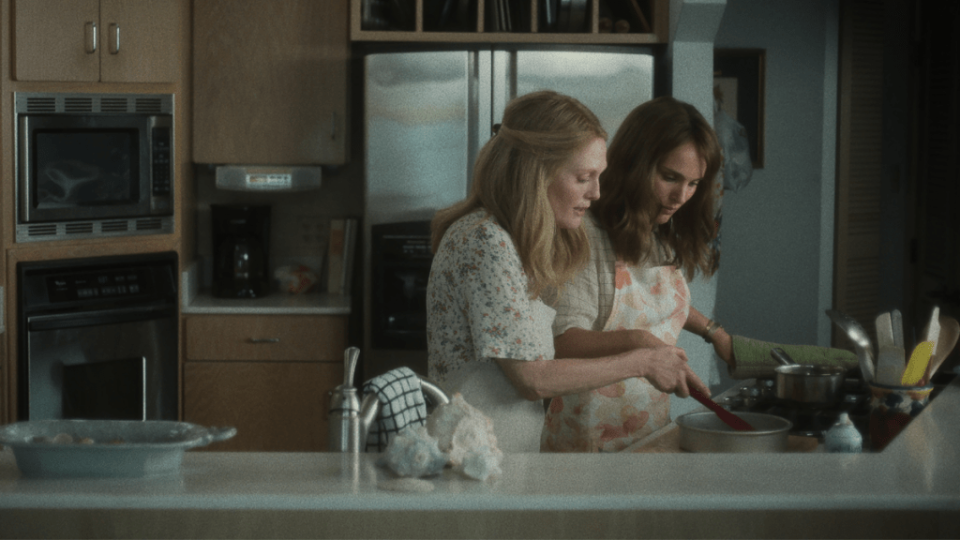
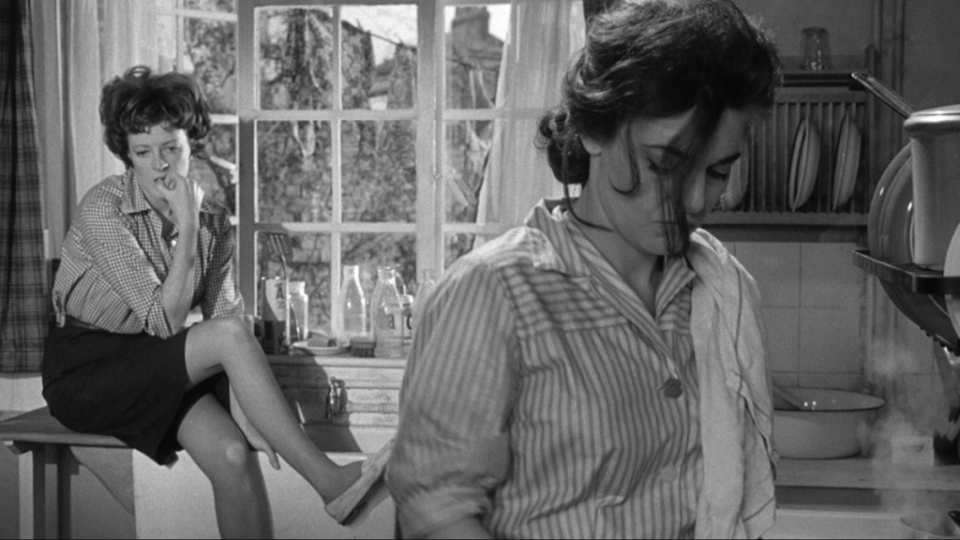
“May December” is set in Savannah, Georgia, a perfect locale, according to Napier, for the cultural expression of attire as uniform. “But Savannah can be very limited for prepping,” she said with a laugh. “Even the thrift stores, for menswear, were limited to blue Oxford, blue Oxford and blue Oxford. Every middle-aged man has a uniform: blue button-down shirt, khaki shorts and Top-Siders. The women also wear very similar types of floral dresses.”
But the costume designer pointed out that there is a special, magic-key feeling to discovering the perfect outfits for a contemporary movie, such as non-identical twin white frocks that the two women wear for a climactic stand-off on a football field near the story’s end. “There is something about finding your Fabergé egg,” she said. “So that we can support the actors, stay out of the way, be quiet – but really help to evoke a mood and imbue a feeling in the film.”

Past Lives
Costume design by Katina Danabassis
“Past Lives,” the exquisite first feature by Celine Song, opens with an image of three people filmed from a distance while sitting at a bar. The shot immediately highlights the nuanced, thoughtful work of the film’s costume designer, Katina Danabassis. The three people are Nora (Greta Lee) and Hae Sung (Teo Yoo), childhood friends in Korea who have reunited in New York City, and Nora’s patient husband Arthur (John Magaro).
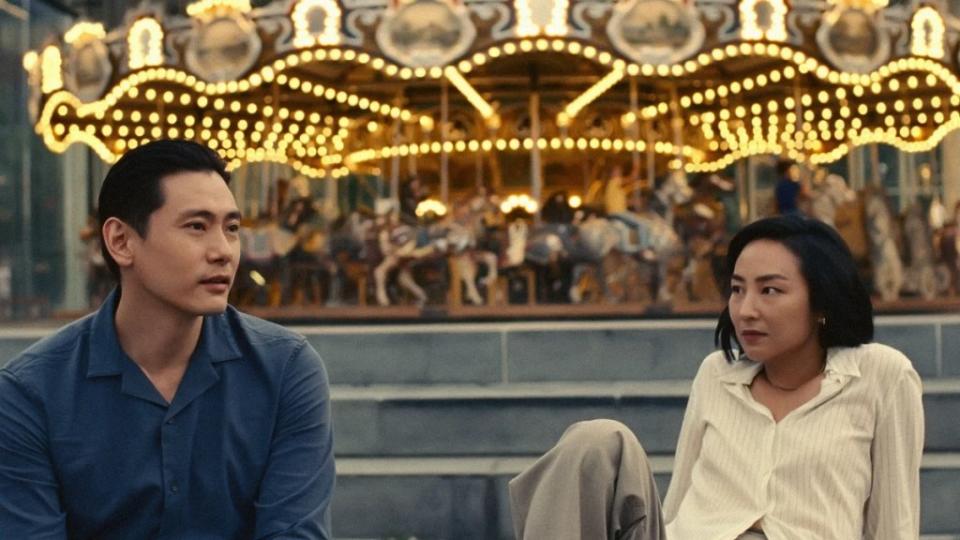
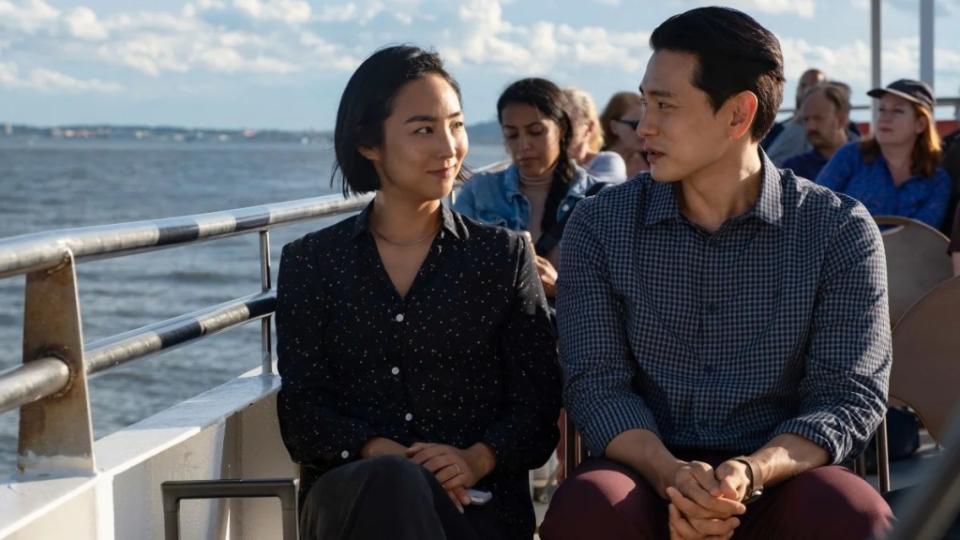
“You can see that Arthur is wearing more of a neutral, earthy color and his shirt is looser,” said Danabassis, whose credits include “C’mon, C’mon” and TV’s “The Curse.” “With Hae Sung, he’s more buttoned up and business-like and thinks that he’s more stylish. His color palette is more cool and cosmopolitan. His shirt is maybe just a little too snug, which also shows that he’s a bit pent-up.”
She added, “With Nora, she looks amazing but she’s also a writer, so we had to find the balance between great outfits, like late ’90s Prada, minimalist and restrained, while also showing that she’s not putting that much effort in there.”
The opening image is repeated later in the film, following a dreamy walkabout sequence between Nora and Hae Sung on a gorgeous day in New York. At that point in the story, we have also learned much more about these three people and what connects them.
“It was hot the first day we were shooting that scene,” Danabassis said of the stroll-around-New-York sequence. “Nora’s pants were summer wool, which worked very well. She’s wearing a cream-colored button-down top and there’s a specific lack of care in her shirt, which was important. The cuffs being unbuttoned – that says, ‘I’m not sure how I want to project myself to this person but I’m not going to try too hard.’ We communicated a lot on how to convey that sort of vibe.”
The subtle contrast of warm and cool clothing resonates across the arc of the film’s lovelorn emotional narrative. Danabassis found inspiration in another directorial debut, which celebrated its 50th anniversary this year.
“(Terrence Malick’s) ‘Badlands’ is a film that I rewatched while on a plane,” she said. “And I noticed the little contrasts of white and dark and navy blue in the costumes, and I thought that was just so beautiful. So that was what I tried to do, specifically for when Nora and Arthur are together. There are a lot of contrasts of blue and white between them.”
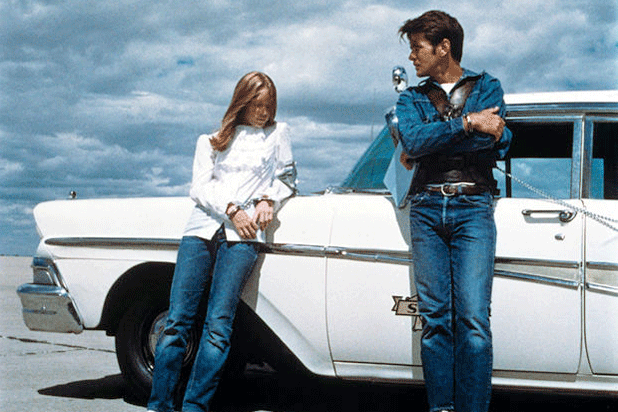
And though the movie’s pulse is synched to the here-and-now, the title the title deliberately suggests reincarnation. Song encouraged Danabassis to lean into the notion of genre blending during the costume process.
“One of the things we talked about was that ‘Past Lives’ is, in some ways, a movie about time travel,” Danabassis said. “It’s not literally a science fiction film, but that idea encouraged us to use stars in Nora’s wardrobe. Blink and you’ll miss it, but Nora has a star ring while she’s in college. She wears a star necklace. The shirt that Nora’s mother is wearing has speckles on it, which we echoed with Nora in the first scene and then the last scenes. So there was this thread of family and storytelling and, well, yeah, the cosmos.”
Passages
Costume design by Khadija Zeggaï
Set among the bourgeoisie in modern day Paris, “Passages” is another crackling romantic drama from the great, uncompromising Ira Sachs (“Keep the Lights On,” “Love is Strange”). The film stars Franz Rogowski as a German director named Tomas who is married to artist Martin (Ben Whishaw) but falls in love with schoolteacher Agathe (Adèle Exarchopoulos).
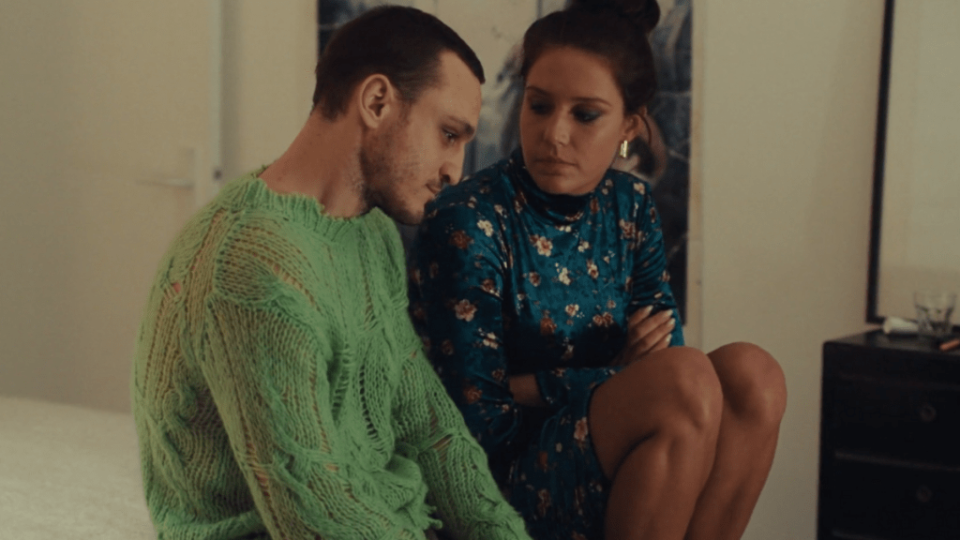
“We realized that we weren’t really making a realistic film,” Sachs said during a recent BAFTA interview. “We were making an unreal film, in which the costumes elevate everything to a point of the dramatic and the impactful and the emotional. So we took risks with the costumes.”
The head of that risk-taking department was Khadija Zeggaï, a collaborator with Sachs on his previous feature, “Frankie,” starring Isabelle Huppert. “The idea of finding a unique piece stimulates me,” Zeggaï said. “And Ira’s attention to costume is the most obvious. Without imposing anything, he guided me to find the right silhouette for each character: Go for what you love, be fair and make sure it’s sexy.”
And sexy it most certainly is. The outfits in “Passages” create a whole visual language, especially for Tomas. A skin-tight dragon-print crop top and leopard pants – the most memorable of many memorable looks in the film – serve as a trigger for seduction in one scene and a weapon for provocation in another.
Zeggaï wanted to suggest a beastly quality within Tomas, while also empha- sizing the frame of Rogowski, a trained dancer. “Ira’s freedom and Franz’s personality really helped me to make the right choices,” she said. “Tomas is wearing clothes cut for the female body. I didn’t alter the clothing. Everything (fit) his dancing body.”
Zeggaï also found a snakeskin jacket in a vintage shop, which she felt accentuated Tomas’s animal nature. “The idea that Tomas could be a wild beast helped me to find this python jacket, as well as his bearskin jacket and much of his clothes,” she said.
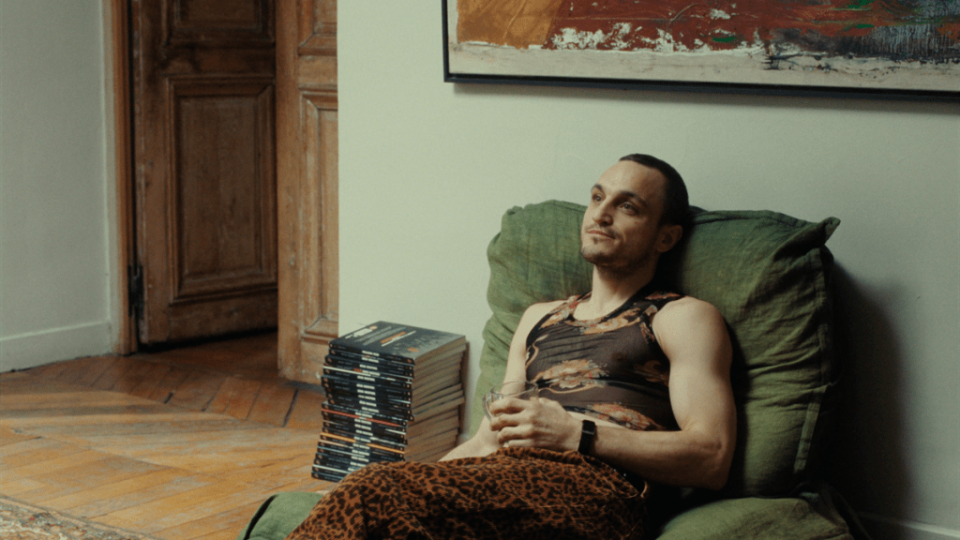
The character also favors mesh tops, including a heavy green sweater with net holes large enough to show his body underneath. “I worked a lot with Ira and Franz on the type of German director who likes to dress up,” Zeggaï said. “And the mesh quality of the sweater is a signature of Tomas’s look.”
Tomas’s relentless personality and his desire to be loved forms the narrative thrust of the film. But the clothes of the other two characters, Martin and Agathe, also serve as a mood-ring contrast. In the movie’s later scenes, we see Martin wearing a loose and light-colored jumper, a departure from the blues and grays in his wardrobe, and Agathe in a scarlet turtleneck sweater.
“Ben, Ira and I talked a lot and did a few fittings,” Zeggaï said. “Ira wanted Ben to
be dressed in white at the end of the film. And (for Agathe) at this point in the film, she has decided she is free. Red evokes strength.”
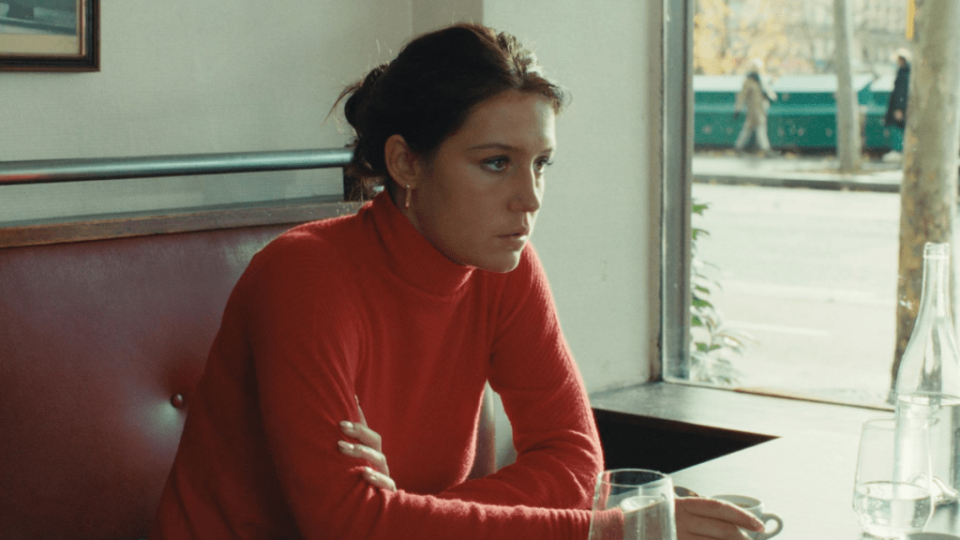
Showing Up
Costume design by April Napier
Filmmaker Kelly Reichardt would just as likely direct the next Marvel movie as she would dress her characters in the sparkliest, fresh- off-the-runway clothes from luxury brands. Glamour is a legitimate and desirable aesthetic – surely Reichardt observed some of it when she premiered her newest, “Showing Up,” in Cannes – but the Oregon- based auteur greatly favors the warm, comfy, thrift-store garb of hanging out. In her films, people even wear the same thing two days in a row. (Just like the rest of us do.)
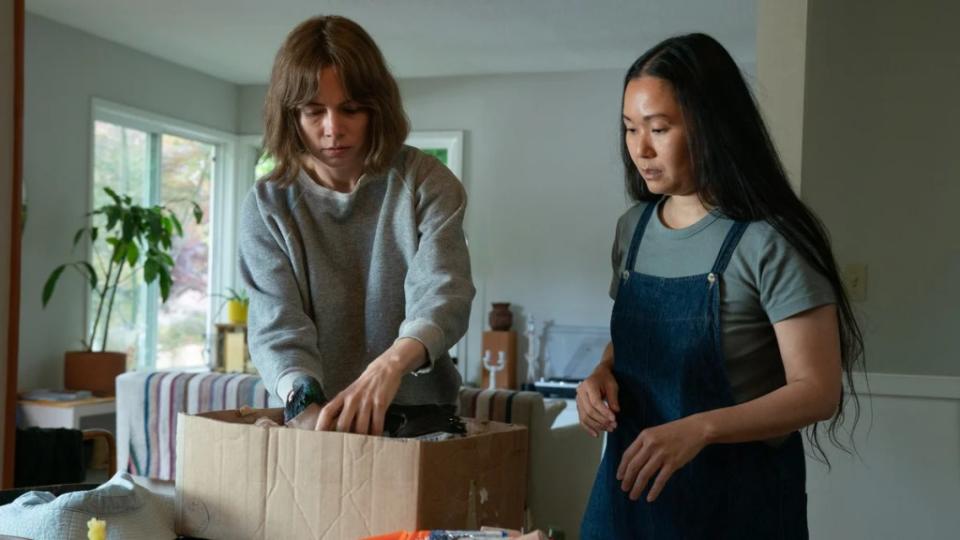
Perhaps the movies where Reichardt has dripped into the 1800s (“Meek’s Cutoff” and “First Cow”) have informed her attitude towards clothes as well- worn, hand-me-down uniforms in her contemporary projects. In “Showing Up,” set around the modest art scene of Portland, a soft-spoken sculptor (played by Michelle Williams) and an installation artist (Hong Chau) appear for about a third of the film in a soft-touch grayish sweatshirt (Williams) and navy blue overalls (Chau), as seen in the photo above.
The story of those blue overalls goes right to the heart of Reichardt’s creative process. “Kelly sent me a text,” costume designer April Napier said. “She said that a camera operator from her previous films had shown her a picture of his wife, who was wearing blue overalls. And Kelly said, ‘It looks so great. Do you think we can get that for Hong to wear?’”
Reichardt didn’t mean a replica, according to Napier. “I called the guy’s wife, her name is Molly,” the designer said. “And I said, ‘Hey Molly, can we borrow your blue overalls?’ She said sure. So we got it for Hong to wear in all those scenes. And then when we wrapped, we cleaned the overalls and returned them to Molly. This is how it goes on a Kelly Reichardt film. Everything, even the clothes, are family- and friends-oriented.”
Read more from the issue here.
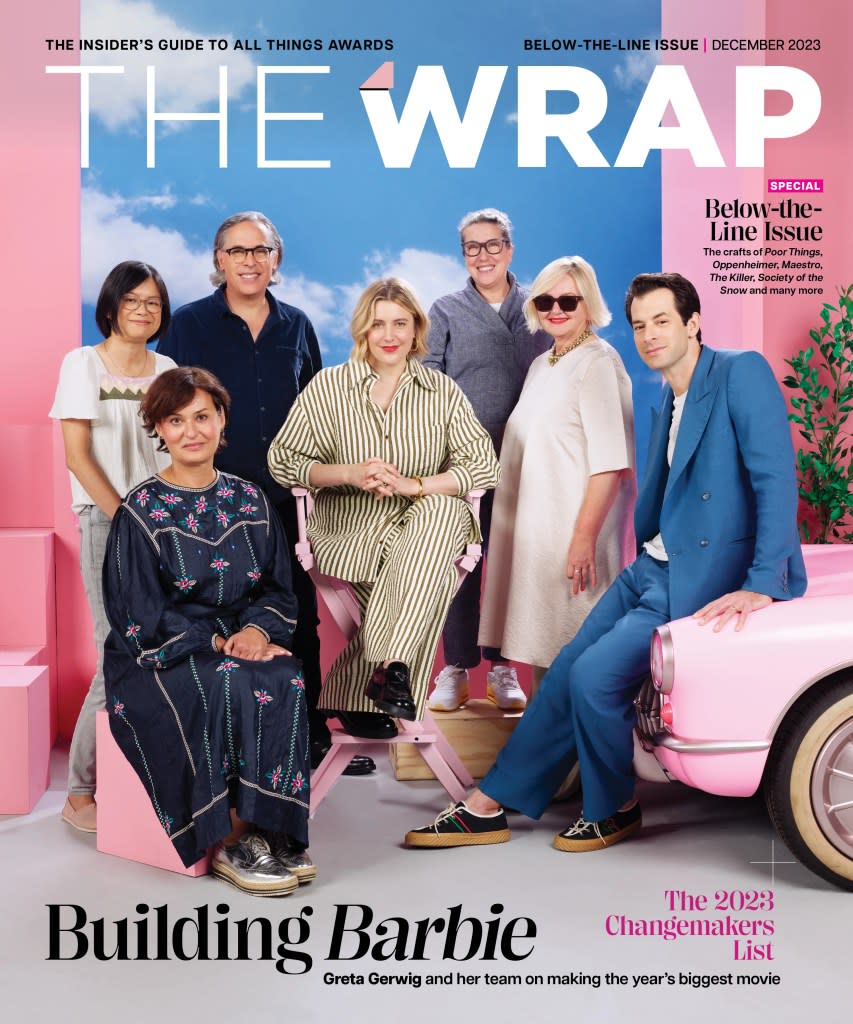
The post ‘May December’, ‘Past Lives’ and Other Costume Designers Explain How They Weave a ‘Sense of Individuality’ Into Modern Clothes appeared first on TheWrap.

